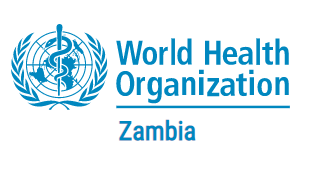Zambia has the third highest burden of cervical cancer in the world, with an incidence rate of 65.5 per 100 000 women and a mortality rate of 43.4 per 100 000 women in 2020. Despite being a preventable and treatable disease, cervical cancer accounts for about 23% of all new cancer cases in the country. The peak age at diagnosis is between 40-49 years.
To address this challenge, Zambia has been implementing a robust screening programme since 2006, using visual inspection with acetic acid (VIA) as the primary screening tool. Cervical cancer screening has been integrated into the HIV programme, as women living with HIV are at higher risk of developing cervical cancer. Since inception, more than 1.5 million women have been screened using VIA, but the overall coverage at population level is still low at about 26%.
In 2019, Zambia started a pilot project to introduce human papillomavirus (HPV) testing – a more accurate and sensitive screening method. As repeated infection with certain strains of HPV is the main cause of cervical cancer, early detection is key in order to prevent the progression of the disease. The project leverages on existing HIV clinics as the entry point and has validated two different centralized testing and near point-of-care platforms.
To date, Zambia has expanded HPV testing to all 10 provinces with 10 regional central laboratories as of 2021. In-line with the World Health Organization’s (WHO) global Cervical Cancer Elimination Initiative, Zambia aims to achieve 90% HPV vaccination coverage, 70% screening coverage, and 90% treatment and care coverage by 2030.
To date, over 110 000 tests have been performed since the introduction of HPV testing. In 2023, more than 40 000 women were screened using the HPV based method.
“I was diagnosed with early cervical cancer in 2020 and I had surgery at the Cancer Diseases Hospital in the capital city, Lusaka. I recovered well and my smears have been negative. I am happy to be alive and free of cervical cancer because it was detected early, and I received proper treatment,” says Kasonde, a retired school teacher in Kabwe, a town in central Zambia. “During the years I was undergoing screening, HPV testing had not been introduced in Zambia. Now there is HPV testing. I encourage women to go for this test.”
The introduction and scaling-up of HPV testing has been supported by the government and cooperating partners, such as the United States President’s Emergency Plan for AIDS Relief and the Global Fund. The option of self-sampling testing was also introduced to increase access and convenience for women. The single-visit screen and treat approach is currently being implemented in 345 facilities, where the self-sampling option is also available.
The transition to HPV testing has faced challenges, but efforts are being made to overcome these barriers. They include developing HPV Testing guidelines and algorithms, improving data management systems, managing supply chain for tests and consumables, reducing turn-around time for results, and enhancing counselling services and retention in the programme.
WHO has supported Zambia with technical assistance and financing towards the development of HPV testing guidelines and national cervical cancer screening guidelines. WHO also supported the procurement of HPV tests and consumables for the most underserved areas.
Strategies also include training of nurses and laboratory staff, streamlining the supply chain, increasing testing on near-to-point of care test platforms to reduce people lost to follow-ups, introducing a registry system for women in follow-up care, and using SMS messaging and phone calls to inform clients of results availability.
Some successes scored in the ongoing transition process include an increase in the number of funding partners currently supporting the intervention to four from one, and a successful integration of HPV testing into the HIV treatment and care programme.
The sustainability roadmap is foreseen as the next step forward, as current services are still mostly anchored on HIV care and treatment services, and not the general population.
“The Zambian government continues to show commitment towards acceleration of progress towards WHO targets by 2030. By harnessing the HPV testing intervention, Zambia hopes to reduce the burden of cervical cancer and save the lives of many women,” says Dr Kennedy Lishimpi, of the Permanent Secretary, Technical Services Department.
Distributed by APO Group on behalf of World Health Organization (WHO) – Zambia.


